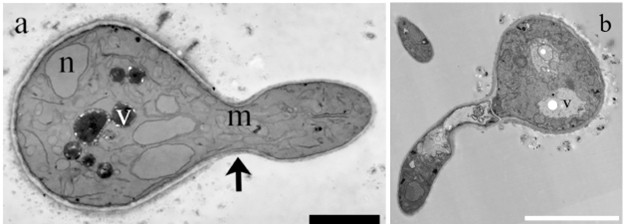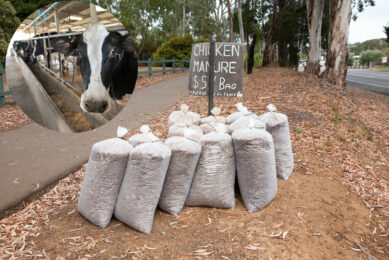5Q’s: Selko – Discovering metabolic processes that thwart fungal survival

Research is revealing new insights on how select blends of organic acids work to disrupt mould’s cellular structures and affect kinetic activities regulating metabolic processes. Pedro Caramona, Category Lead Feed Safety & Quality at Selko talks about these new findings.
Selko researchers collaborating with scientists at Westerdijk Fungal Biodiversity Institute in the Netherlands applied novel models and deployed advanced technologies to understand how a synergistic blend of organic acids works to inhibit fungal growth, generative function, and survival.
According to Pedro Caramona, Category Lead Feed Safety & Quality at Selko, the findings were made possible through the development and application of statistically valid models that offer more dynamic capabilities compared to traditional models that detect the presence and prevalence of moulds. Findings from the experiments were published in the International Journal of Food Microbiology. Below, Caramona remarks on the discoveries and the implications for stakeholders across the feed-to-food chain.
 Why did the scientists choose to study Aspergillus chevalieri in these experiments?
Why did the scientists choose to study Aspergillus chevalieri in these experiments?
We wanted to utilise a very repeatable model to assess the product’s ability to inhibit mould growth. High humidity conditions provide an ideal environment for moulds to proliferate. However, our model used Aspergillus chevalieri, a common mould that can grow in conditions with extremely low levels of moisture and water activity (aW), making this a relatively “high challenge model” to validate our product efficacy.
 What are some parts of fungal cells affected by organic acids?
What are some parts of fungal cells affected by organic acids?
Researchers observed effects on cells’ mitochondria, which are directly related to energy generation, and on processes required for a cell to survive. For example, metabolic functions involved in starting and regulating apoptosis – the steps that lead to a cell’s death – were observed following treatment with the product (Figure 1). These insights helped to validate the hypothesis underlying the product’s mode of action and how it affects fungal cell development.
Figure 1 – Scanning transmission electron microscopy (STEM) micrographs of conidia.

a) germ tube kept for 20 minutes in a malt extract, showing several vacuoles with electron dense contents (v), several nuclei (n), and regular shaped mitochondria (m).
Note the complex cell wall layers of the germinated conidium and the location of germ tube development (arrow); and
b) germinating conidium kept for 20 minutes in a malt extract and treated for 30 mins with Fylax® Forte-HC liquid with ActiProp®, showing septum and a partially collapsed germ tube. Mitochondria (most irregularly shaped) are close to a vacuole (v). Bars are 2µm (a) and 1µm (b)

What “synergistic activities” were observed that reveal the mode of action used by organic acids, particularly propionic acid?
We have identified, a cascade of synergistic effects that ultimately lead to the disruption of the mould cell and prevent its ability to develop. Using electron microscopy, researchers were able to confirm the cytomorphologic effects of the ActiProp technology, which disrupts the structure of the cell and inhibits its ability to reproduce.
 How did the models used in experiments conducted at Westerdijk Fungal Biodiversity Institute improve upon conventional models for assessing moulds in feed?
How did the models used in experiments conducted at Westerdijk Fungal Biodiversity Institute improve upon conventional models for assessing moulds in feed?
Westerdijk Fungal Biodiversity Institute is recognised as one of the largest biodiversity centres in the world. Collaborating with their experts and making use of biomechanistic models, allowed Selko’s researchers to go beyond simply assessing the presence and level of mould colonies following treatment with an anti-fungal product. We wanted to understand the mode of action that Fylax Forte-HC liquid with ActiProp technology, a blend of various synergistic ingredients including organic acids, to affect mould’s cellular structure and metabolic processes. The new models were developed to specifically address these fundamental questions and allowed us to understand how the structure of the cell wall and other components are affected by our technology.
 How are researchers building on the findings recently published in the International Journal of Food Microbiology and what do they mean for producers?
How are researchers building on the findings recently published in the International Journal of Food Microbiology and what do they mean for producers?
Our collaboration with Westerdijk Fungal Biodiversity Institute and Nutreco’s global presence inspires us to continually advance understanding of how microbial conditions around the globe affect farmers’ and feed mills’ businesses. By exploring kinetic and realistic modelling, we can glean new insights on how our solutions support safety across the feed-to-food chain. We’re looking at biosynthesis and mechanisms of mycotoxigenic moulds and using cross-functional modelling and artificial intelligence to help us be more predictive with our mitigating strategies to fight mould development and manage mycotoxins.











